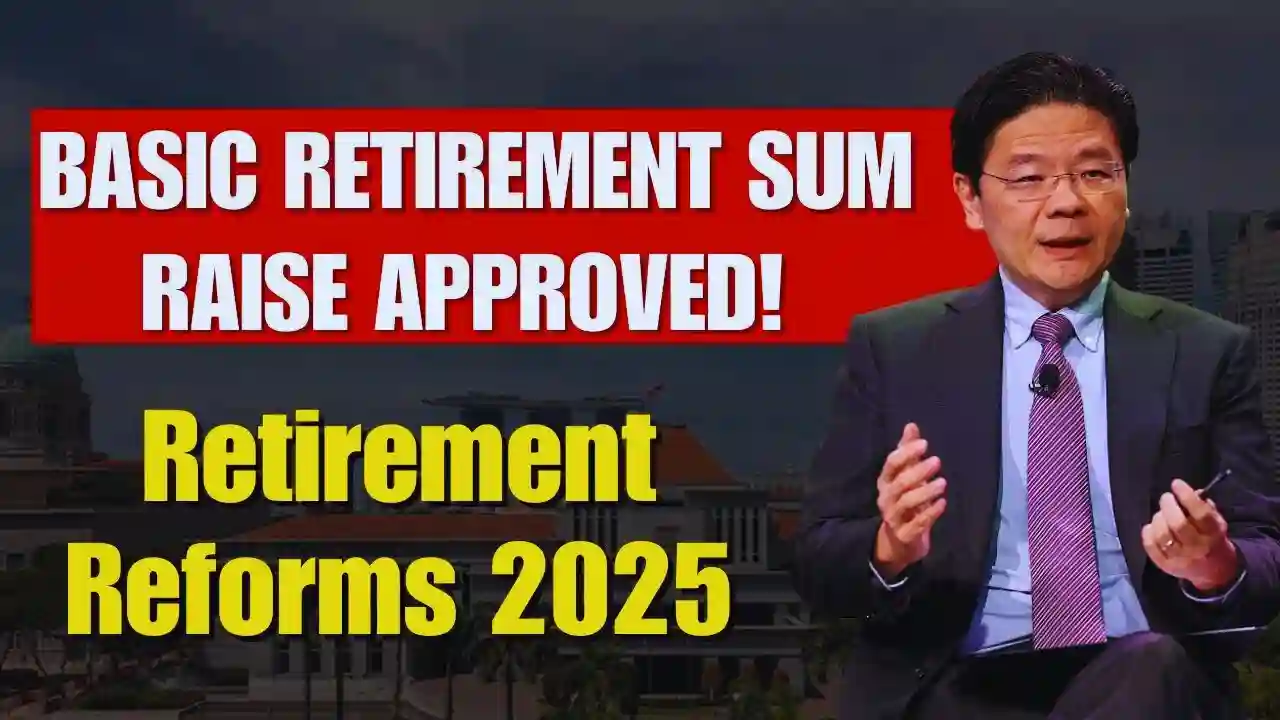The Basic Retirement Sum (BRS), one of 2025’s retirement reforms for Singapore, is now approved for raising by the government. The rise in BRS is part of other reforms meant to address present realities of increased living costs and inflation and also financial needs after retirement so that retirees will have enough savings to last them through their post-retirement years.
The one part, among many, that constitutes Singapore’s Central Provident Fund (CPF) system is the Basic Retirement Sum. This system is designed in a way that every citizen has to set aside an amount of money on his/her CPF account, which shall be referred to as a Basic Retirement Sum, on reaching age fifty-five.
In a stipulated term, these funds can then be withdrawn in the form of monthly payouts through the CPF LIFE annuity scheme. This is expected to support individuals during their retirement life. The new changes put in place by the government include raising the amount from the BRS to keep pace with economic conditions right now and help retirees in the future maintain a more comfortable standard of living.
Why Increase BRS
This situation of raising the Basic Retirement Sum by the government comes as the stipulated move to develop the country’s economy. With the blossoming aging population of a country, more seniors will find tired activities necessary to improve their means of living.
Besides needing increased care support for needy elders, lifesaving treatments and drugs are getting expensive, which lengthens life expectancy, resulting in more expense incurred by aged people for a longer period of their lives. Therefore, helping retirees save for better pensions has now become even more critical.
Hence, this increase in BRS aims to narrow the existing gap between today’s balances in CPF accounts and the future-failing amount for financial independence at retirement.
Impact on Future Retirees and Financial Planning
Increased Basic Retirement Sum which will affect Singaporeans who are now approaching the retirement age, and younger working-aged people. For example, someone who is nearly 55 years old might need to revise their retirement plans so that they will achieve the new savings target. Those who are short of their accumulated amount in CPF could top up the account voluntarily or find other savings options that will allow them to reach the higher BRS.
In other areas, for young Singaporeans, the shift emphasizes why they need to start early on that all-important line of retirement planning. For employees, if they contribute always through their careers into their CPF account, they will have gained all the necessary savings to meet the new BRS and thus will ensure a more peaceful retirement.
What Lies Ahead in the CPF Site?
The increase in the Basic Retirement Sum comes with a whole series of other CPF reforms, which serve as measures to enhance retirement adequacy. In fact, apart from the hike on the BRS, such measures also involve making adjustments to the payouts from the CPF for those having surpluses/less than minimum sum accumulation, ensuring higher returns on amounts drawn monthly during old age. All changes also promote voluntary top-ups; encouraging contribution maximization towards the CPF-most probably in the last lap of employed life.
The need for ongoing review of the CPF system has also been stressed by the government to ensure responsiveness to a changing economic environment and evolving retiree needs. This probably involves further amendment of BRS and other retirement policies.




